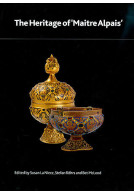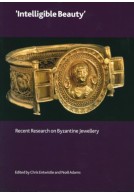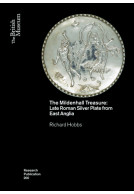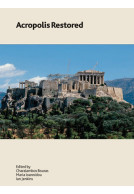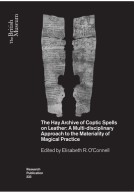Recent Discoveries of Tetrarchic Hoards from Roman Britain and their Wider Context (Paperback)
Imprint: British Museum Press
Series: British Museum Research Publications
Pages: 250
Illustrations: 100
ISBN: 9780861592364
Published: 5th May 2024
Script Academic & Professional
Series: British Museum Research Publications
Pages: 250
Illustrations: 100
ISBN: 9780861592364
Published: 5th May 2024
Script Academic & Professional
You'll be £40.00 closer to your next £10.00 credit when you purchase Recent Discoveries of Tetrarchic Hoards from Roman Britain and their Wider Context. What's this?
+£4.99 UK Delivery or free UK delivery if order is over £40
(click here for international delivery rates)
Order within the next 4 hours, 2 minutes to get your order processed the next working day!
Need a currency converter? Check XE.com for live rates
(click here for international delivery rates)
Order within the next 4 hours, 2 minutes to get your order processed the next working day!
Need a currency converter? Check XE.com for live rates
This volume was prompted by the recent discovery in Britain of two large coin hoards dating from the first decade of the fourth century AD – Wold Newton and Rauceby. Coins of this early Tetrarchic period are relatively uncommon finds in Britain and elsewhere, due mainly to the brevity of their periods of issue followed by successive reductions in the weight of the coinage. The book also republishes the 1944 Fyfield hoard within the context of these more recent finds and contains preliminary reports on two very large hoards of coins of the same period that have been found in recent years in France (Juillac) and Spain (Tomares).The Tetrarchic system of rule (AD 293−c. 313) was initiated by the Roman Emperor Diocletian to stabilise the Roman Empire, with the rule of the western and eastern Empire being split between two senior emperors and their two junior colleagues. The transition from the third to fourth century AD is a pivotal phase in the history of Roman Britain, with Britain coming once again under the control of the Empire following periods of turbulence and usurper rule between AD 260−296. Under the Tetrarchy, Britain was subjected to the extensive monetary reforms undertaken by Diocletian which saw the introduction of the denomination now referred to as the nummus. The period is of particular interest to numismatists as during this time Roman coinage was minted in Britain at the mint of London. The volume therefore covers not just the hoards themselves, but also considers the wider significance of these hoards for Britain and the early fourth century monetary economy, particularly in the western empire.
Customers who bought this title also bought...
Other titles in the series...
Other titles in British Museum Press...











